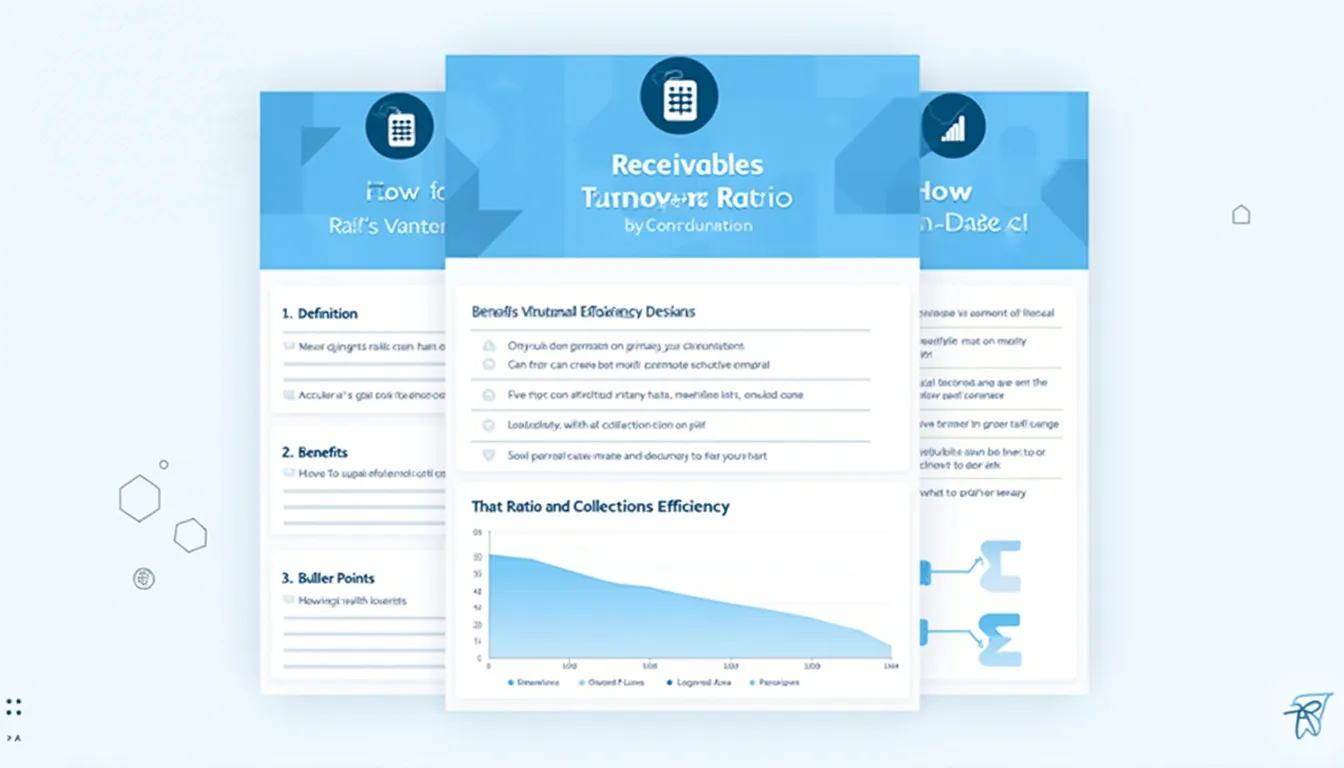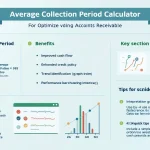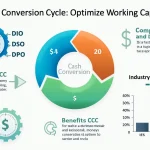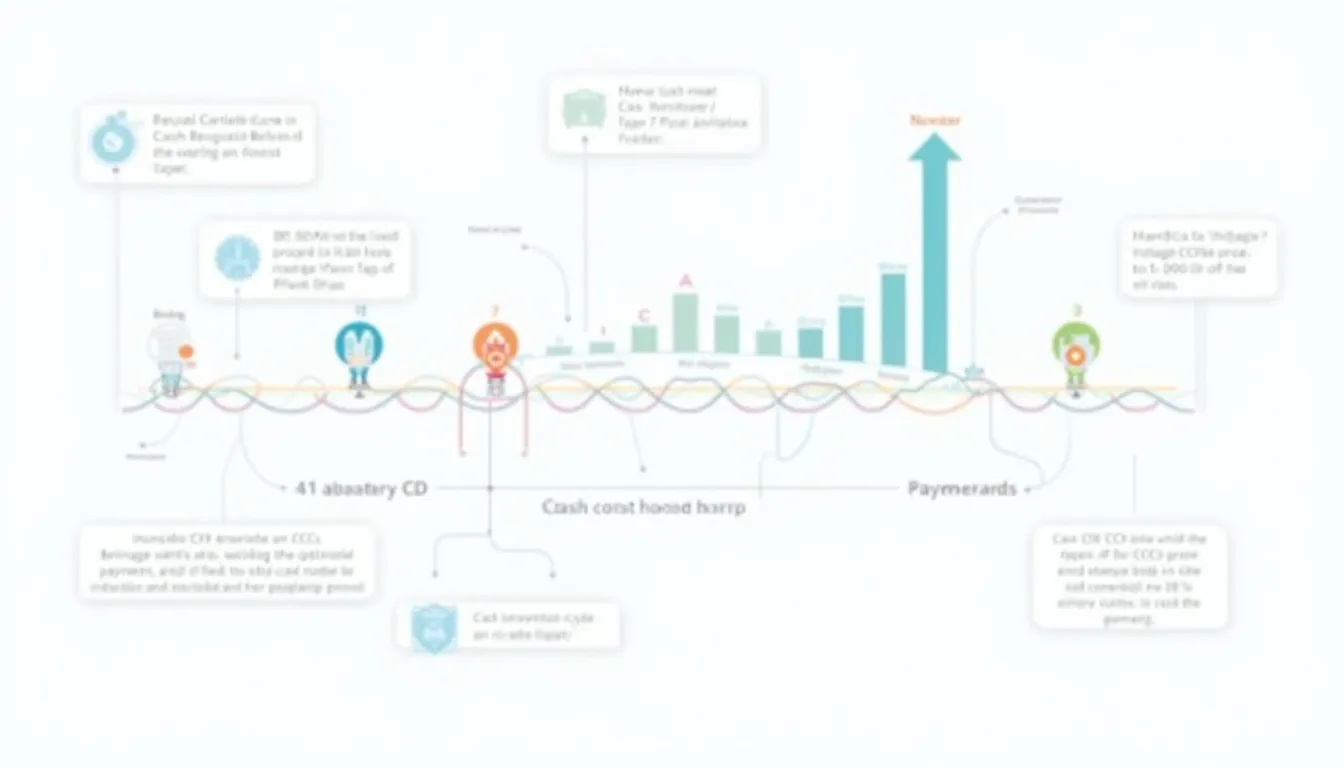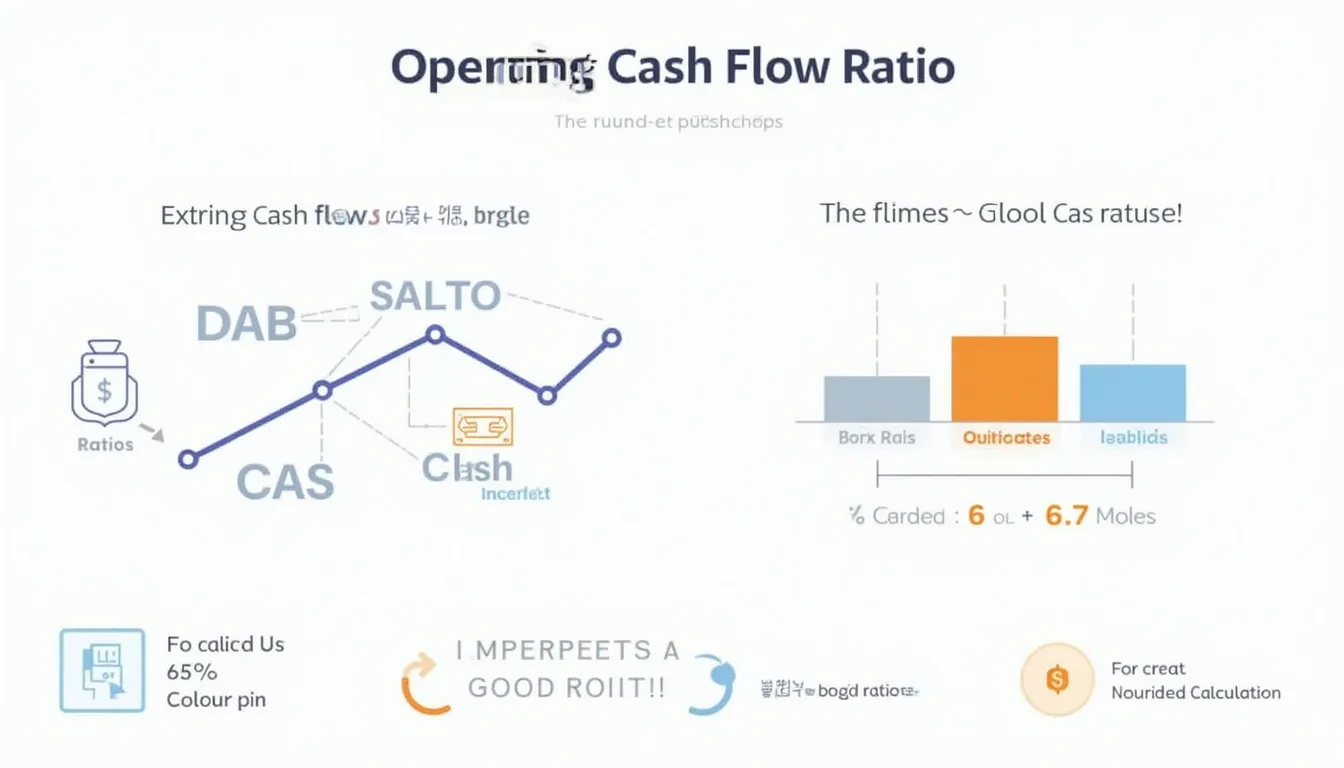Receivables Turnover Ratio Calculator
Is this tool helpful?
How to use the tool
- Fill in Net Credit Sales: e.g., 1,200,000 USD or 850,000 USD.
- Add Average Accounts Receivable: e.g., 200,000 USD or 100,000 USD.
- Press “Calculate” to display your Receivables Turnover Ratio (RTR).
- Read the result & interpret: Higher RTR means faster cash collection.
Formula
$$\text{RTR}= \frac{\text{Net Credit Sales}}{\text{Average Accounts Receivable}}$$
Example A
- Net Credit Sales = 1,200,000 USD
- Average A/R = 200,000 USD
- RTR = 1,200,000 ÷ 200,000 = 6.0 turns
Example B
- Net Credit Sales = 850,000 USD
- Average A/R = 100,000 USD
- RTR = 850,000 ÷ 100,000 = 8.5 turns
Quick-Facts
- Typical U.S. RTR ranges from 6-9 for manufacturing firms (Dun & Bradstreet Industry Norms 2022).
- Days Sales Outstanding (DSO) below 45 days corresponds to RTR above 8 (Moody’s Analytics, 2023).
- IFRS 7 requires disclosure of credit-risk metrics, including receivable aging (IASB, 2021).
- Every 1-turn RTR improvement can free 13 % of working capital on average (PwC Cash Release Study 2022).
FAQ
What is a “good” receivables turnover ratio?
A ratio above your industry median—about 7.6 for U.S. midsize companies—signals efficient collection and stronger liquidity (Hackett Group Working-Capital Survey 2023).
How does RTR relate to cash flow?
Higher RTR shortens Days Sales Outstanding, accelerating cash inflows and reducing reliance on external financing (Treasury Management International, 2022).
Does the formula use gross or net sales?
Use net credit sales, excluding returns and allowances, to avoid overstating collection speed (FASB ASC 310-10-45).
How often should I calculate RTR?
Monthly reviews let you spot emerging payment issues before quarter-end statements lock in results (CFO Magazine, 2021).
What lowers RTR?
Lenient credit terms, poor follow-up, or customer financial distress all slow payments and push RTR down (Federal Reserve Small Business Credit Survey 2023).
Can RTR compare companies of different sizes?
Yes—normalize by using ratio, not dollar amounts—but always compare within similar industries for context (Investopedia, URL).
How do I improve a low RTR?
Shorten payment terms, automate invoicing, and offer early-pay discounts; firms adopting e-invoicing cut DSO by 9 days on average (Ardent Partners ePayables Report 2022).
Is RTR the same as DSO?
No. RTR measures turns; DSO expresses the same dynamic in days. They are reciprocal: $$\text{DSO}= \frac{365}{\text{RTR}}$$ (Corporate Finance Institute, URL).
Important Disclaimer
The calculations, results, and content provided by our tools are not guaranteed to be accurate, complete, or reliable. Users are responsible for verifying and interpreting the results. Our content and tools may contain errors, biases, or inconsistencies. Do not enter personal data, sensitive information, or personally identifiable information in our web forms or tools. Such data entry violates our terms of service and may result in unauthorized disclosure to third parties. We reserve the right to save inputs and outputs from our tools for the purposes of error debugging, bias identification, and performance improvement. External companies providing AI models used in our tools may also save and process data in accordance with their own policies. By using our tools, you consent to this data collection and processing. We reserve the right to limit the usage of our tools based on current usability factors.
